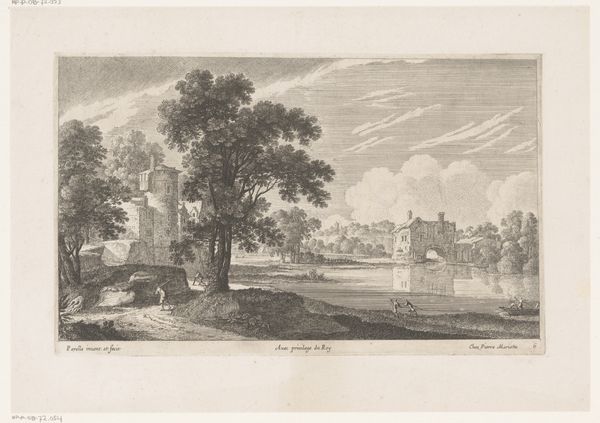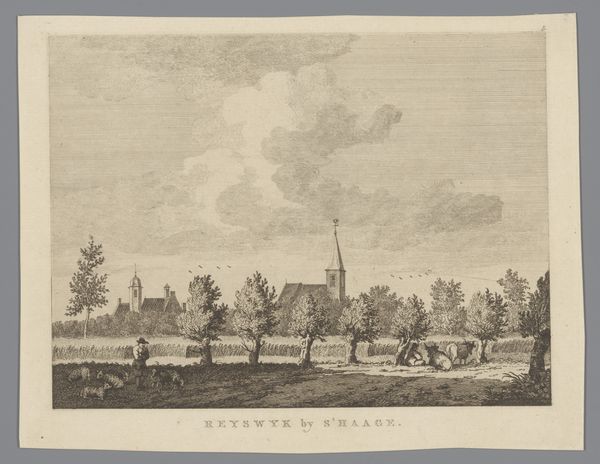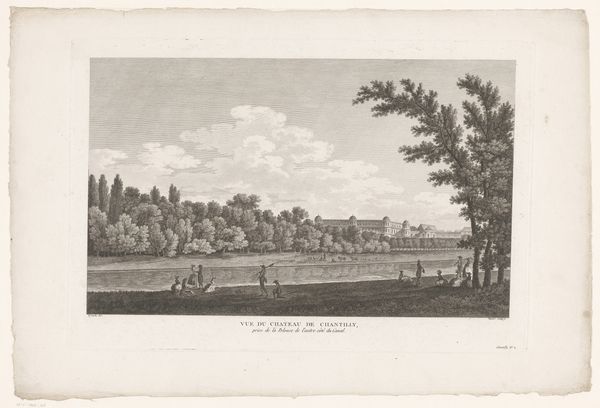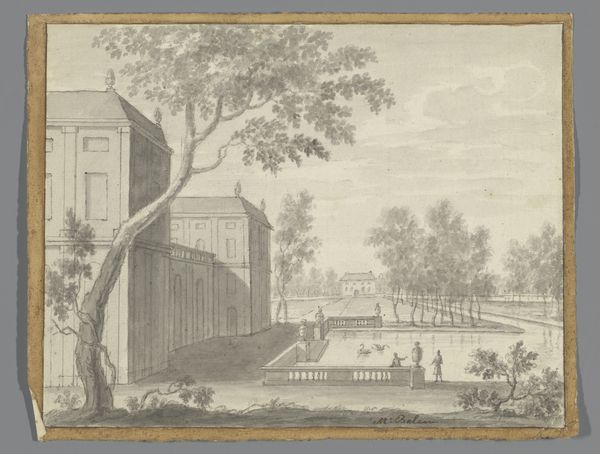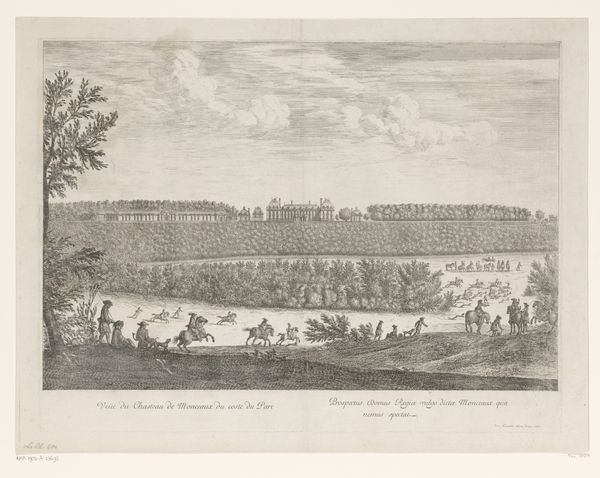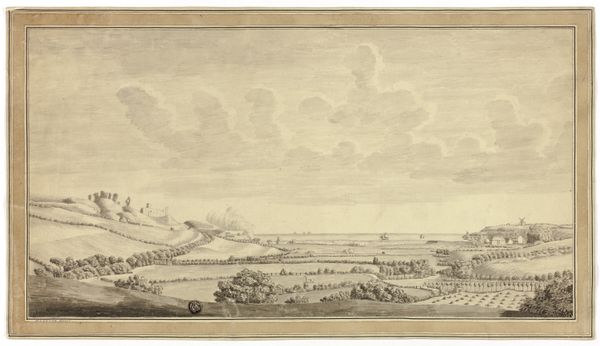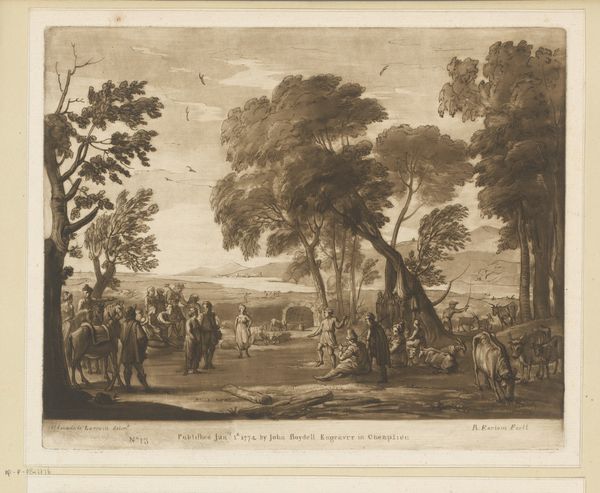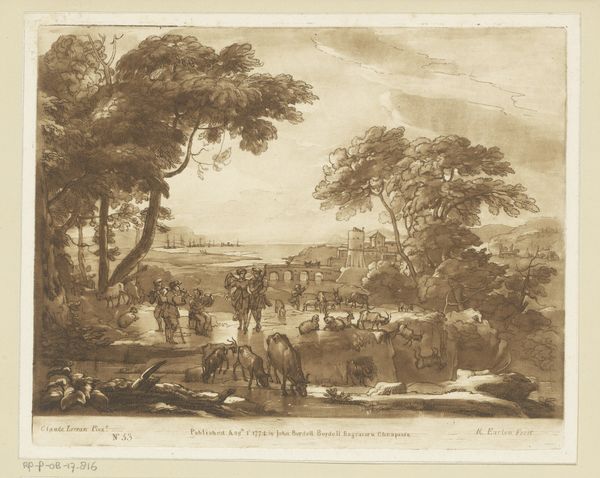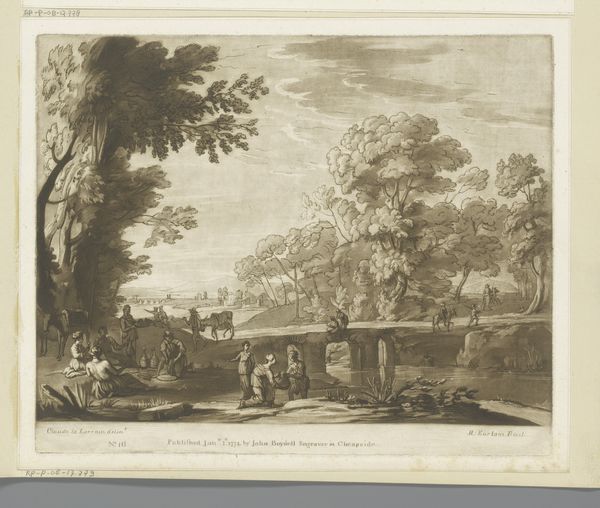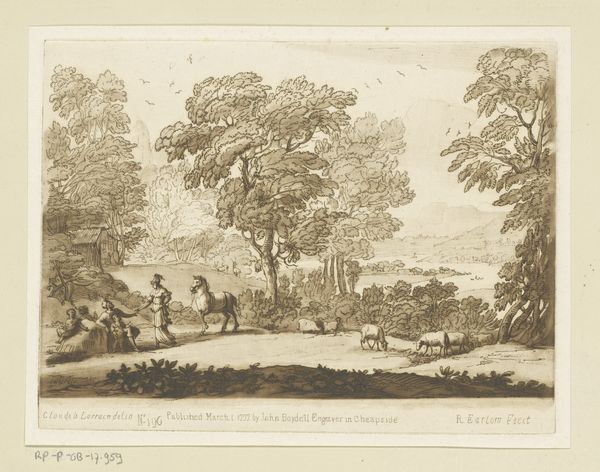
print, engraving
#
dutch-golden-age
# print
#
landscape
#
cityscape
#
engraving
#
realism
Dimensions: height 175 mm, width 213 mm
Copyright: Rijks Museum: Open Domain
Curator: This is "View of Franeker, Seen from Schalsum", an engraving created around 1779-1805 and now residing in the Rijksmuseum. What strikes you about it initially? Editor: Well, it’s like stepping back in time. There’s a peacefulness... a quiet pastoral feel despite it being a cityscape. And the cows! Always with the cows, right? Curator: Indeed. This print exemplifies Dutch Golden Age landscape and cityscape traditions. Consider the printmaking process itself – the artist, Dirk de Jong, painstakingly incised lines into a metal plate, translating a scene into reproducible form. Think of the labor involved in that kind of distribution of imagery. Editor: It makes you appreciate the detail so much more. I mean, look at the clouds, the way they’re built up from tiny lines. It’s so meticulous. It almost feels devotional in a way – honoring the landscape by documenting it with such care. Curator: The act of engraving itself elevated the everyday, transforming a view into a commodity. Consider the role prints played in disseminating knowledge, constructing national identity, and shaping consumer culture at the time. This print normalizes rural economies for wider consumption, emphasizing the connection to agricultural resources, perhaps intended for a city-dwelling patron. Editor: That makes perfect sense. It is kind of idealized, isn't it? A snapshot of simple country life, nicely packaged. But also, I can almost feel the weight of the clouds and the dampness of the fields. I love how the artist gave equal importance to the scenery than the town itself in the background, don’t you think? Curator: Landscape depictions are never neutral. Even the animals present a sense of curated idyll, contributing to the larger social and economic narratives being constructed through the image. It’s about ownership, production and land value. Editor: Okay, that's true! Thanks, that context changes how I view this. It’s still beautiful, though. Makes me think about how we frame "nature" even now, what we choose to see, and what we leave out. Curator: Exactly, seeing what is not obviously present is important when thinking about production of the artwork. Editor: Well, now I see a landscape designed, carefully, and very purposefully distributed as more than just a view.
Comments
No comments
Be the first to comment and join the conversation on the ultimate creative platform.
